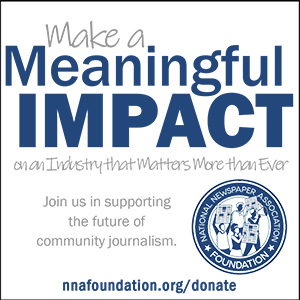Are you telling your own stories?
Jim Pumarlo
Aug 1, 2021


I circulated a column celebrating community newspapers earlier this year in recognition of Sunshine Week. Its publication prompted a few comments.
One reader, who hailed from a Minneapolis suburb, read the column in his local paper. He wrote, in part:
“I enjoyed the message about the relevance and importance of trained journalists. My issue that I struggle with journalism or journalists in general after this latest election cycle is the intentional bias in the reporting. Politically I lean more conservative, and I am very sensitive to the majority liberal bias in the mainstream commercial media. It seems that it is no longer even avoided or denied, but even accepted as a given … How and why should we trust our journalists to ever be fair and honest in their craft when this bias exists?”
Journalists climb this wall every day, I replied. Community newspapers are far from perfect, I added, but said I find it disappointing and misleading when community press gets branded under the broad brush of “the media.”
He thanked me for my perspective, relating it to his experience in local versus state or national politics. “At the local or community level where we see and greet each other on the street, there is a higher level of accountability and authenticity required than when there is distance that divides us. I will look for that value proposition in my local community newspaper.”
A great exchange, I said to myself, but with only one reader. How do we reach the masses?
My challenge to editors and publishers: Are you telling your own stories? Are you having regular conversations with readers and explaining news decisions?
Newspapers play a vital role in the everyday life of a community and its citizens. We take pride in delivering stories that readers like to read and stories they should read, but it’s not without guidelines for what does and does not get published.
Then we frequently fall short in explaining policies. Too often the standard response to an inquiry is simply, “Sorry, but it doesn’t fit our guidelines.” Or, “We’ve always done it that way.”
I cannot overstate the value of communicating regularly with readers on your operations. Brainstorm among your employees — go beyond the newsroom — and you’ll generate more than enough topics to address.
What’s your policy for column submissions?
What are your guidelines for weddings, engagements, open houses?
Why don’t youth sports leagues receive as much attention as varsity sports?
Why don’t you publish photos of all check presentations?
What qualifies as news, and what constitutes an ad when it comes to business reports?
How do you handle news from civic clubs?
These topics, and many more, can be addressed at almost any time.
Some topics might warrant an explanation in regular cycles. Election season is a great example. Do you implement special guidelines for letters to the editor? Or how about a response to the frequent cry: What gives you the right to offer editorial endorsements — “to tell us” who to vote for?
Other columns are prompted by specific circumstances. In one instance, I responded to a complaint that our review of a school play was too negative.
Another reader told us it was in poor taste to run a photo showing a beer bottle at an election night victory party in the sheriff’s race. I alerted the winning candidate and explained our decision-making, letting him know I was going to address the comment in a column.
We also were questioned on how we reported sensitive subjects, too. In these cases, you should give pause as to whether and when you should explain your policy. There is a time and place for writing about your guidelines on suicide reports — and you most definitely want to discuss the circumstances with the affected individuals in advance of writing anything.
Community newspapers are increasingly challenged in today’s fractured media landscape and in the atmosphere of “fake news.” Being transparent in your operations is most important to remain relevant to readers and advertisers.
I wrote a weekly column for 20-plus years as editor of the Red Wing Republican Eagle. My intent was not to convince readers that a decision was the right way or only way to handle a report. Rather, my goal was to help them understand our rationale and to know that decisions were not made on a whim.
Jim Pumarlo is former editor of the Red Wing (Minnesota) Republican Eagle. He writes, speaks and provides training on community newsroom success strategies. He is author of “Journalism Primer: A Guide to Community News Coverage,” “Votes and Quotes: A Guide to Outstanding Election Coverage” and “Bad News and Good Judgment: A Guide to Reporting on Sensitive Issues in Small-Town Newspapers.” He can be reached at www.pumarlo.com and welcomes comments and questions at jim@pumarlo.com.










